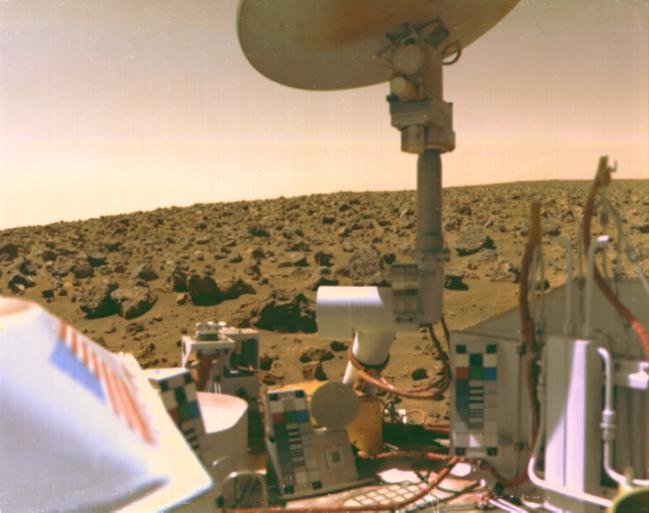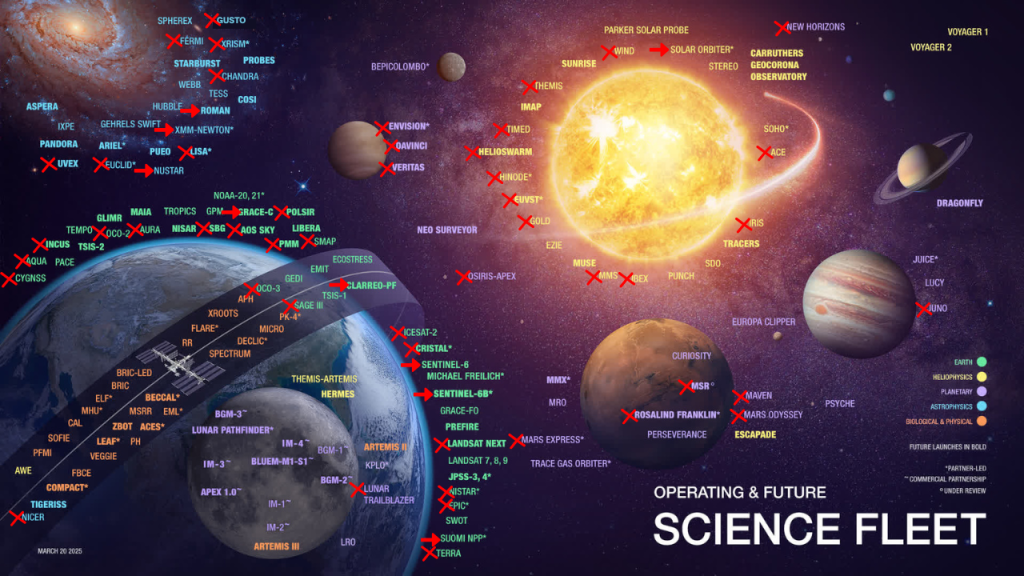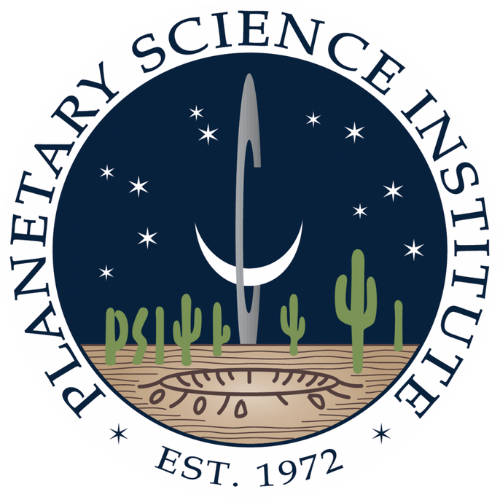
(This was first published as an Op-Ed in the Arizona Daily Star and is the opinion of PSI director and CEO Amanda Hendrix.)
When I was a third grader in 1976, I was struck by a Viking 2 image taken from the surface of Mars. I found it remarkable how Earth-like the scene appeared, and it felt truly incredible to see this NASA spacecraft sitting on another planet. That blew me away. It was a big reason that I wanted to study planetary science and space exploration. Now, I am the Director and CEO of the Planetary Science Institute, an independent Tucson-based non- profit research organization. With more than 130 scientists based in over 30 states, we are one of the largest private employers of planetary scientists in the world and we rely heavily on NASA science dollars. But now our work is under threat.
The White House’s 2026 budget proposal slashes NASA’s budget by an unprecedented 24%, reducing it from $24.8 billion to $18.8 billion. The budget proposal — a product of the White House Office of Management and Budget, led by Project 2025 architect Russell Vought — includes the largest single-year budget cut in NASA’s history. NASA spending would reach its lowest level since 1961, adjusted for inflation.

Now, $18.8 billion may sound like a lot of money. But NASA represents less than half of one percent of government spending. Thus, cutting NASA by this much will not significantly change the national debt situation, but it will shatter U.S. science and exploration capability. We will “save” nearly nothing but destroy much in this process.
In the budget proposal, NASA’s Science Mission Directorate — which oversees scientific research and missions — takes the largest cut (47%). More than 40 NASA missions would be defunded, including missions that are currently flying and returning excellent scientific data, such as Juno orbiting Jupiter, Mars missions and a University of Arizona-led spacecraft mission on its way to study the asteroid Apophis. Importantly, the vast majority of costs on spacecraft missions are incurred before the data start coming back, so canceling missions while they’re flying is plainly a waste of taxpayer dollars.
Missions in development would also be cut, including critically-needed Venus missions. Venus represents the closest analog to Earth as the only place in the Solar System that had liquid water for billions of years, and had the potential to germinate life as we know it. Understanding Venus’ history and how it foreshadows Earth’s future is critically important, yet the U.S. has not sent a mission to Venus since 1994. This Earth-like planet is still very mysterious. All of these proposed mission cuts would impact work happening right here in Tucson.
PSI’s work is largely funded by competitive grants from NASA. So, if this budget is approved, it will not only have devastating effects on our nation’s leadership in space science, but will also negatively impact southern Arizona’s space sciences and the local economy. NASA science dollars generate $337 million in Arizona’s economy each year, so this would be a huge hit on the local economy.
The budget proposal also zeroes out NASA education, which funds school programming to educate students and teachers about Solar System science. These programs give back to taxpayers by sharing the impact of the science and inspiring the next generation of space scientists and enthusiasts. Education experts at PSI work frequently with the Children’s Museum Tucson, the Arizona Science Teacher Association and the Pima County Schools Superintendent’s Office, among others, developing space education programs. None of this work will occur — in Tucson or elsewhere — under these cuts.
Getting back to the image of the Viking 2 lander on Mars. The flag on that spacecraft represents U.S. leadership in space exploration, and is such an inspiration — for third-graders (and more) around the world. Let’s not lose that!
I urge you: please contact your congresspeople! PSI scientists and staffers have been in communication with Congress about the implications of these cuts and about how important it is to reverse these actions. We urge our broader community to do the same. Contact Congressman Ciscomani and Senators Kelly and Gallego and tell them that NASA science is important and that the proposed budget cuts would be devastating to Tucson.

